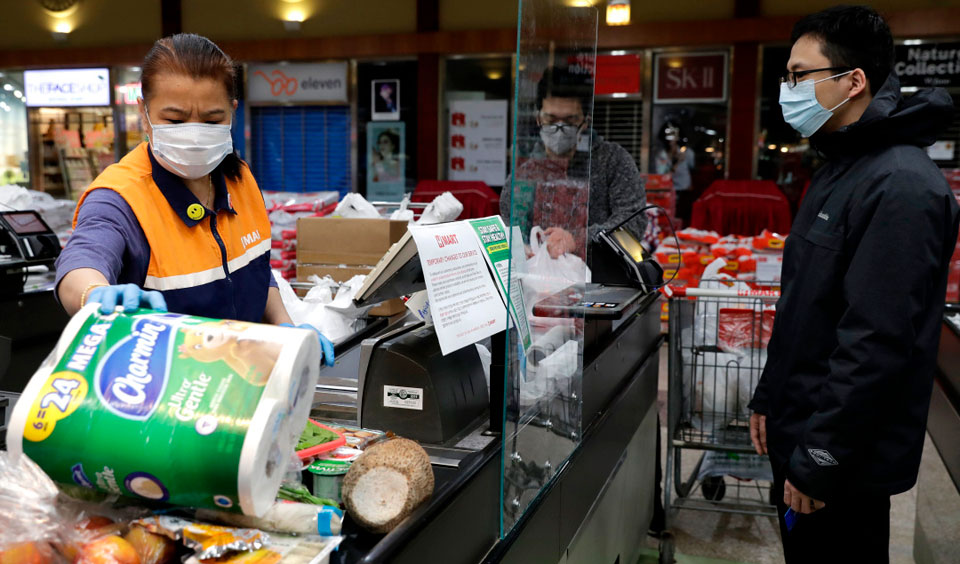
WASHINGTON—The galloping spread of the coronavirus plague took its toll on U.S. unions in 2020, the Bureau of Labor Statistics reported. But in a paradox, while union membership declined in its annual report, union density rose by 0.5%, to 10.8% in 2020.
That’s because as the economy tanked to try to prevent the disease’s spread, proportionally more non-union members than unionists lost jobs. BLS disclosed the entire U.S. workforce over the age of 16 declined by 9.56 million, due to the pandemic.
BLS said its nationwide rolling survey of more than 50,000 households showed union membership declined by 321,000 in 2020, to 14.253 million, compared to 2019.
The number represented by unions—adding in the workers who don’t pay a red cent for union services, due to right-to-work laws or to legally opting out—totaled 15.939 million, 444,000 fewer than in 2019.
AFL-CIO President Richard Trumka had a different take. He cited unions’ 65% approval in public polls and union activism which helped put pro-labor Democrat Joe Biden in the White House and predicted future gains. Biden “showed on his first day he is willing to fight for working people’s safety and to get union busters out of government,” said Trumka.
That combination creates “a once-in-a-generation opportunity to finally create an environment where what workers desire truly drives union density. That requires passing the Protecting The Right To Organize (Pro) Act so our labor laws support and protect the freedom to form a union,” Trumka said.
“In 2020, America saw working people in a new light, as the true engines of our economy and the trusted servants who can carry us through a crisis. While last year was filled with unemployment and economic pain because of a deadly pandemic and the incompetent federal response to it, union density rose. We believe this increase is part of a national groundswell.”
The coronavirus cost unions 468,000 men aged 16 or over, the BLS reported. But the number of unionized women over 16 increased by 44,000, to 6.672 million. Their union density jumped from 9.7% in 2019 to 10.5% in 2020. Men’s union density rose 0.2%, to 11% last year, representing 7.582 million workers.
Density increased in all demographic subgroups: Blacks, Hispanic-named, Asian Americans, and both full-time and part-time workers.
And while state and local governments reported in other BLS surveys they had to shed more than a million workers due to coronavirus plague, most of those workers appeared to be non-unionists. Public sector density increased by 1.5%, to 34.8%, the BLS surveyors reported.
Actual numbers of unionized government workers rose at all levels, federal (+40,000), state (+42,000), and local (+24,000). As small as the local government increase was, it pushed density there up by 2.3%, to 41.7%.
As a result of those increases and the coronavirus’s devastation of the private sector, public sector unionists (7.173 million) outnumbered private-sector ones (7.08 million), BLS surveyors reported.
As usual, unionists were concentrated in the Northeast, the Great Lakes, and Pacific Coast states. The top states in density were Hawaii (23.7%), New York (22%), Rhode Island (17.8%), Alaska (17.7%), Washington (17.4%), California (16.2%), New Jersey (16.1%), Minnesota (15.8%), Michigan (15.2%) and Illinois (14.3%). The two Carolinas took the two bottom spots, as usual.
Among industries, the big collapse in union density—and the big impact from the pandemic—came in hotels, bars, and restaurants. Unite Here, the union for those workers, at one point reported that more than 90% of its 200,000 members were out of work, though it put many of them to work on politics in the 2020 campaign and the following two special U.S. Senate elections in Georgia.
BLS said the unionist crash in that sector was from 220,000 (2.1%) in 2019 to 137,000 (1.6%) last year. Overall employment in those businesses skidded from 10.6 million in 2019 to 8.32 million in 2020. That may not count the 498,000 bar and restaurant workers who lost their jobs in December alone, according to other BLS reports.
“Data on union members for 2020 reflect the impact on the labor market of the coronavirus pandemic and efforts to contain it,” BLS said. “Comparisons with union membership measures for earlier years, including the union membership rate and the median usual weekly earnings of union members, should be interpreted with caution,” it warned.
Density “and the rates by many demographic and employment characteristics increased despite declines in the number of union members. These increases reflect disproportionately large decline in total wage and salary employment, mostly among nonunion workers, compared with the decline in the number of union members. Increases in median weekly earnings reflect the disproportionately large decline in employment in 2020, notably among lower-paid workers, such as those in the leisure and hospitality industry.”












Comments